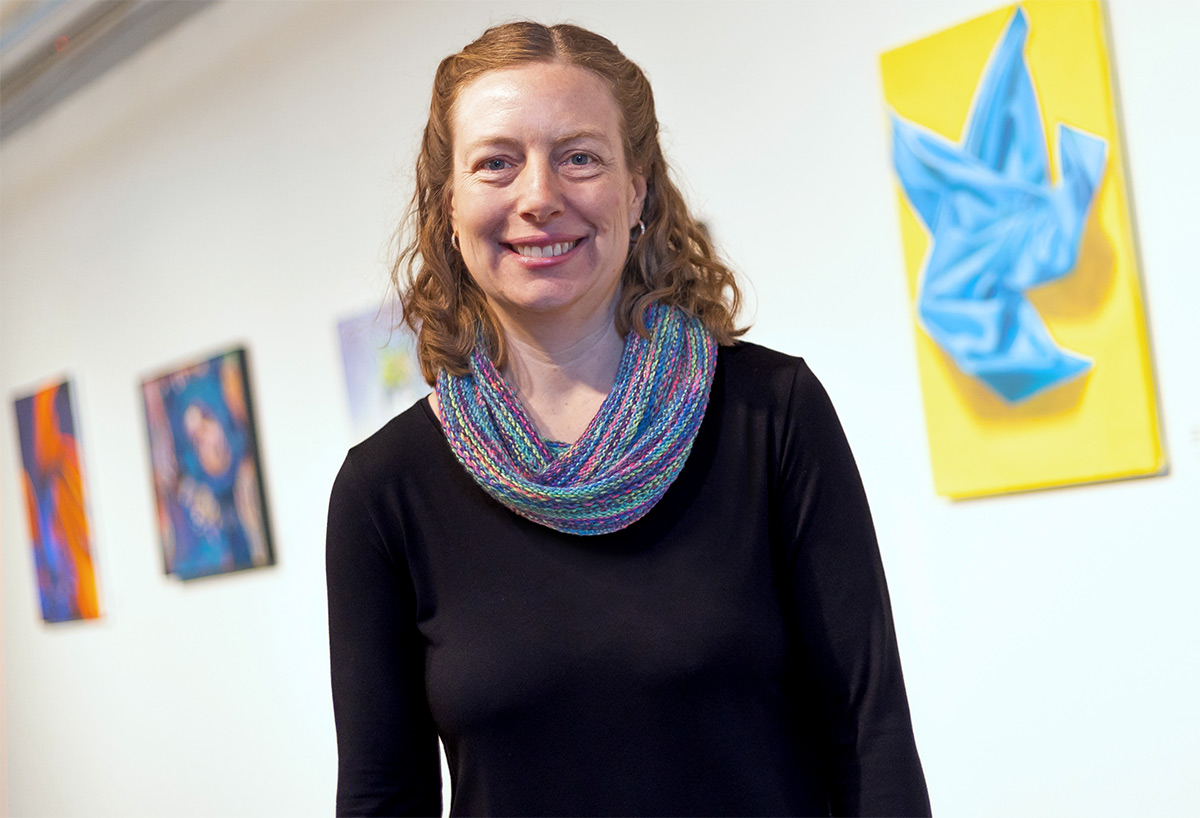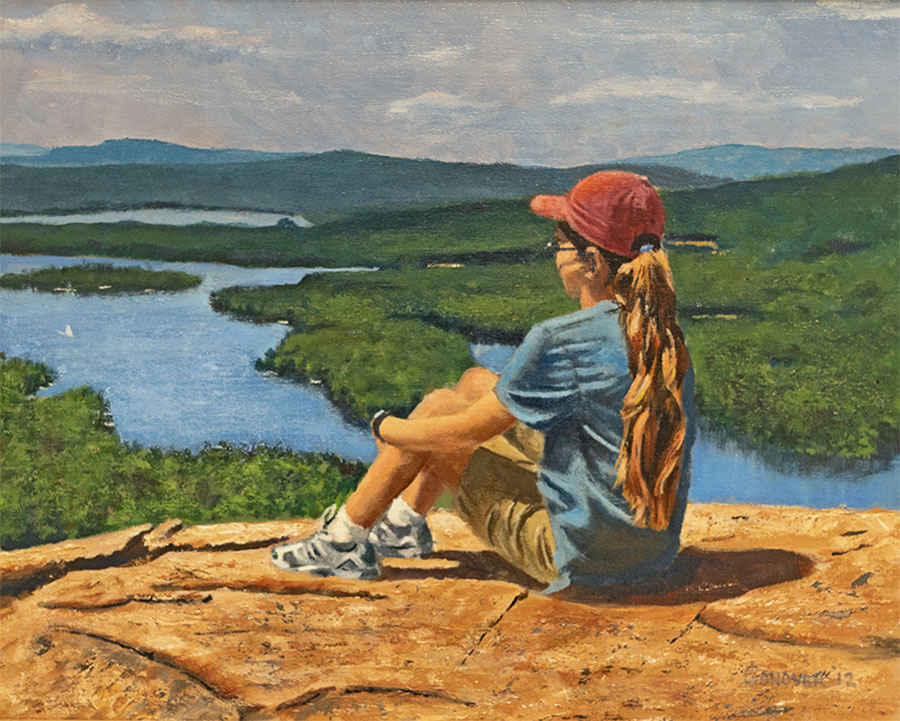 Our Welcoming Community
Our Welcoming Community
Hailey Botelho ’22 photo.
It took two centuries for the population to rise over 300 in Meghan Doherty’s hometown of Dummer, New Hampshire, and it now hovers around 306. The new director of Plymouth State’s Museum of the White Mountains knows almost every resident by name.
Doherty says that while her Coös County town remains stable, she nevertheless holds a deep commitment to cultural diversity and brings it to her work, a stance she attributes partly to the time she spent going to big city museums and events while growing up.
Doherty began to hone her fascination with art history along with a skill in deepening visitor interest in art exhibits as an undergrad working at the Cincinnati Art Museum. Her job was to develop brochures and scavenger hunts for children and engage them in exhibitions, such as one featuring Chinese paintings. “I really like finding ways to get people to slow down and look closely at the art,” she says.
Doherty also worked at the Art Institute of Chicago. “I had the immense pleasure of helping to inventory its collection, from fifteenth-century early German woodcuts to twentieth-century expressionist prints, which had been stored during renovation,” she explains. “That was a foundational experience.” Next, while earning master’s and doctoral degrees in art history, Doherty completed a fellowship and worked at the Chipstone Foundation, handling its striking collection of early American material culture and decorative arts.
After 10 years leading the Doris Ulmann Galleries at Berea College in Kentucky and curating the college’s art collection, Doherty returned to New Hampshire in January. She remains fascinated by a material culture approach to history and studying historical facts through the objects that people made and used, and notes that the museum’s permanent collection includes thousands of archival materials and images—from rare glass-plate photographs and stereoscopic images to hotel ledgers, postcards, maps, paintings, and other significant White Mountains ephemera.
“Significant donations to the collection include 18 works of White Mountain art painted by female artists in the nineteenth and twentieth centuries, and the personal collection of memorabilia and historical materials gathered from Stephen Barba’s 38-year career at The Balsams Grand Resort Hotel, in Dixville Notch,” Doherty adds.
“What I love most about academic museums is that the galleries provide a space for students to integrate their critical thinking skills from the classroom into a real-world space,” Doherty says. They have the opportunity to think about history differently and encounter objects that bring the past to life.” ■ Janice Beetle

Honoring New Hampshire’s Indigenous Culture
Over the years this has taken several forms, including artistic displays, discussions, and other programming. Two recent museum presentations illustrate the range. In January 2021, “Digging into Native History in New Hampshire” featured an archaeological discussion of Abenaki history. The New Hampshire Humanities event revealed the deep native presence in the Granite State, inches below the earth’s surface.
More recently, central New Hampshire’s familiarity with indigenous words such as “Pemigewasset,” “Winnipesaukee,” and so many others that are part and parcel of our modern-day lives was examined when the museum hosted an informative session on “Indigenous Mapping, Descriptive Geography and Place Names.” The presentation by Paul and Denise Pouliot, the Sag8mo (chief speaker) and Sag8moskwa (female head speaker) for the Cowasuck Band of the Pennacook and Abenaki People, was presented as part of the exhibition, Wayfinding: Maps of the White Mountains. The museum’s current exhibit, Watching the Seasons Change, features the painting shown above and crafts by Abenaki basketmakers.
The museum plans to continue incorporating both historic and contemporary indigenous artwork and themes in future exhibits and presentations, and to provide a platform for indigenous voices to tell their own stories of life in the White Mountains.